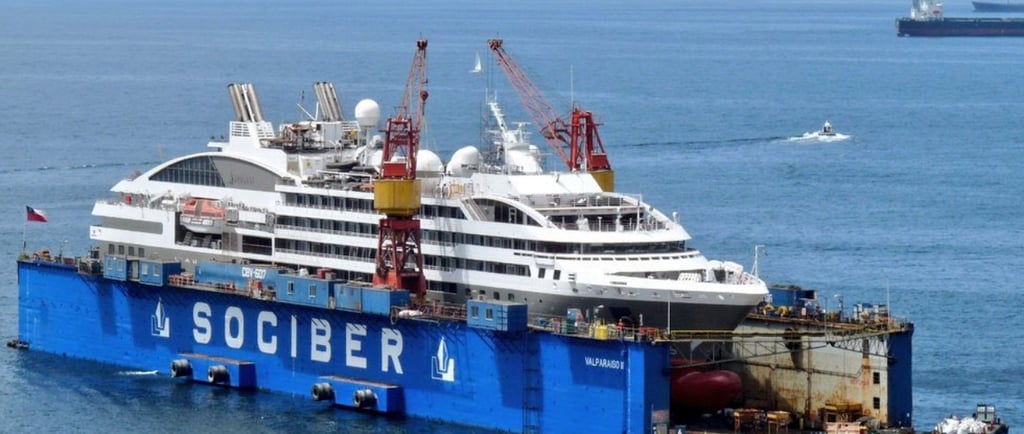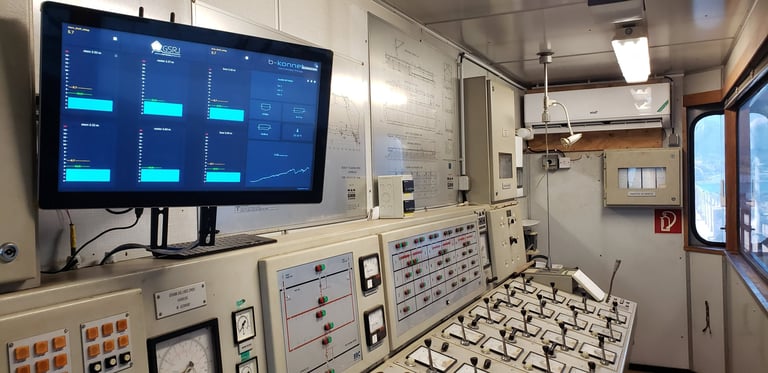Floating Dock Draft and Deflection control
Safety and controlled floating dock grounding maneuver
Alejandro Hugo
11/20/20243 min read


Platform for sensor control: control of tanks, drafts, trim, list, hogging and sagging for ships, floating docks, boats and maritime artifacts.
Platform with a powerful processing center that additionally allows you to:
Generate AI-based analytical information for predictive analysis
Allows you to combine data from different sensors to generate proactive analytics
Allows setting alarm thresholds based on direct and/or combined data
Allows saving historical data for later analysis
Allows you to send data over the Internet to report to remote platforms
Allows you to activate or deactivate control elements (sirens, pumps, valves, etc.)
Allows you to incorporate existing sensors.
The information is displayed in control panels that are designed according to user requirements, so they can be adapted to the use and custom of each particular operation.
Configuration for multiple tanks
Completely flexible system in terms of the number and type of tanks or sensors and allows up to 256 sensors to be configured on a single data bus. Modbus RTU/TCP is used for data transmission, which is a standard for industrial IoT communications and facilitates internal connectivity. Through this protocol it is possible to obtain information digitally, without the need for calibration of each sensor. All unit conversions, from volume to mass, for example, or calculations with different densities, can be done directly by software, so all unit adaptation can be carried out comfortably and without long individual calibration processes. Power to the sensors is via the same digital bus, so no parallel power wiring or distributed power supplies are required.
Operator / Control Panel
An intuitive display panel shows pond levels, drafts, lateral and longitudinal inclinations and all relevant information directly. User-definable elements are also included, such as marking target levels for drafts or ponds, or to define alarm thresholds, or to facilitate floating dock maneuvers. All information displayed is exportable to Excel tables for analysis on external platforms. All graphs have a full page display function or modification of the time range, for detailed analysis or to have greater definition in shorter and even period ranges.
Several panels can be defined that fulfill different functions, such as for operation, for surveillance during guards, for historical analysis, etc. As it is an IoT platform, it has versions of panels to be used on mobile phones, which are accessible from the Internet, if there is access, or locally, through the platform’s own Wi-Fi network. Monitor sizes are optional, but the base system is offered with a 24” monitor.
Hydrostatic Sensor
b-kontrol DLCS uses hydrostatic sensors that measure the level based on the depth to which they are submerged. Density corrections depending on the liquid in which they are submerged are carried out directly on the platform, so it is not necessary to individually calibrate each sensor. The hydrostatic pressure signal is transmitted directly, in digital form, to the process center, so it does not require air purge interfaces, making the installation simpler and more reliable. The Keller 36X sensor is a high precision 0.25%FE (0…50ºC) level sensor with digital and/or analog outputs. Level transmitter with RS485 outputs and also a digital output of 4-20mA, 0-10V or 0-5V. Provides level and pressure information in different units, as well as temperature information of the medium in which it is immersed, which expands its application, This sensor is based on Keller piezo-resistive sensors with proven precision and stability.
Central Processing Unit
It includes the high-performance processor on which the b-kontrol ship dymanics platform is installed. This unit fulfills 3 main functions:
Database
Advanced Rules and Analytics Engine
Control Panel
It uses a Postgres relational database that is used as a repository for the data collected by the sensors
The rules and advanced analytics engine allows, among others:
Define alerts and alarms and send to external messaging platforms such as email, telegram and others.
Define conditions of actions
Define calibration parameters Define advanced analytics such as statistics, predictions, and data combination
Send data to external platforms and remote panels over the Internet with MQTT or HTML protocols.
The control panel allows you to display information visually, report alarms and interact with mobile threshold definitions, for example. It also allows adding data control panels from other sensors that can be incorporated in the future. The panels can be customized according to the client’s requirements.






